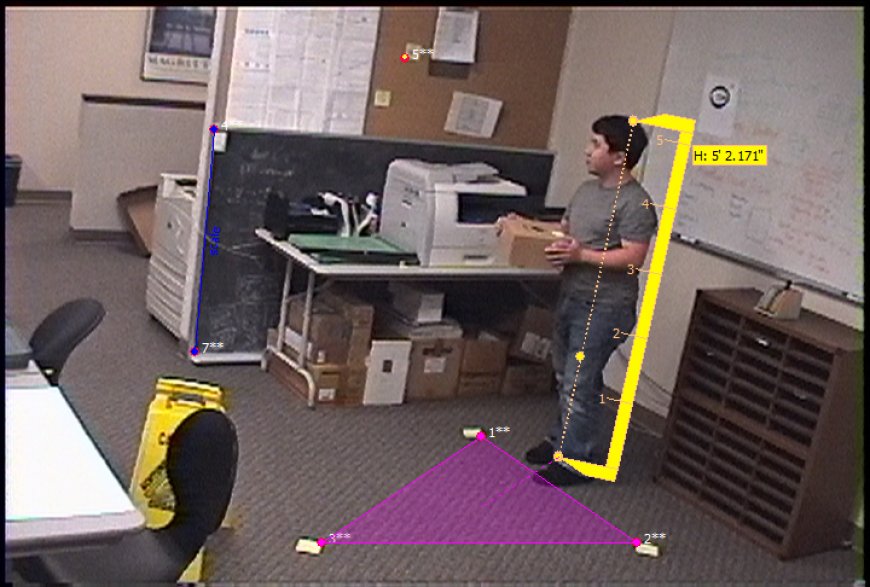Crime Scene Video Analysis: Enhancing Accuracy with Photogrammetry
Discover how photogrammetry is revolutionizing crime scene video analysis. Learn about techniques, benefits, and real-world applications in forensic investigations.

Modern criminal investigations increasingly rely on visual evidence to build accurate reconstructions and timelines. crime scene video analysis has become essential for investigators, especially when determining precise spatial relationships and movement patterns. One powerful tool aiding this process is photogrammetrya method that extracts reliable measurements from photographs and videos. This blog explores how combining video footage with photogrammetry enhances crime scene reconstructions, ensures accuracy, and supports courtroom presentation.
Understanding Crime Scene Video Analysis
What Is Crime Scene Video Analysis?
Crime scene video analysis is the scientific examination of video evidence captured at or near a crime scene. It helps extract valuable data such as suspect behavior, timing, object positioning, and scene layout. The goal is to analyze and interpret video content in a way that maintains its integrity while producing actionable insights.
Why Video Analysis Is Crucial in Forensics
Video recordings are often the most direct, unaltered representation of events. Whether sourced from CCTV, smartphones, or body cams, they can offer investigators critical details. However, raw video can be distorted due to angles, lens types, and motion blurthis is where photogrammetry comes into play.
Role of Photogrammetry in Video Analysis
What Is Photogrammetry?
Photogrammetry is the science of making measurements from images. In forensic applications, it involves extracting geometric information such as distances, object sizes, and angles from multiple frames or camera views. This process creates accurate 3D representations of a scene.
Applying Photogrammetry to Crime Scenes
When a crime scene video is analyzed using photogrammetric software, investigators can:
-
Map trajectories of people or vehicles.
-
Reconstruct 3D models of the environment.
-
Measure distances between key objects or subjects.
-
Determine camera calibration parameters for accurate scaling.
Photogrammetry Techniques Used in Forensics
-
Single-Image Photogrammetry Measurements from a single frame using known reference sizes.
-
Multi-Image Photogrammetry Uses overlapping images to generate point clouds and depth data.
-
Video-Based Frame Extraction Extracts frames from video and processes them like still images.
Benefits of Integrating Photogrammetry in Crime Scene Investigations
Increased Accuracy
Photogrammetry reduces errors caused by video perspective distortion and ensures measurements are based on verifiable data.
Improved Scene Reconstruction
3D reconstructions allow juries and investigators to visually understand what occurred, improving communication and comprehension.
Time-Stamped Evidence Validation
By combining timeline data with spatial metrics, investigators can validate or refute testimonies with empirical evidence.
FAQs
Q1: Can photogrammetry be used with poor-quality video footage?
A1: Yes, though the results depend on the clarity and resolution. Reference objects and multiple angles can improve accuracy even with low-quality footage.
Q2: How is photogrammetry different from standard measurement tools?
A2: Unlike basic tools, photogrammetry works in 3D space and compensates for distortion, angle, and lens variations to produce scalable measurements.
Q3: Is photogrammetric analysis admissible in court?
A3: Yes, when conducted by qualified professionals following proper protocols, it is considered scientifically valid and admissible.
Q4: What software is used in crime scene photogrammetry?
A4: Investigators use specialized forensic photogrammetry software designed to handle both images and video frame extraction.
Q5: How long does photogrammetric analysis typically take?
A5: It varies based on complexity, but straightforward video scenes can often be processed within hours, while more detailed reconstructions may take days.
Conclusion
Crime scene video analysis, when combined with photogrammetry, transforms raw footage into measurable, court-admissible evidence. By creating accurate 3D models and spatial measurements, forensic investigators can extract deeper insights, ensure objectivity, and support legal proceedings more effectively. As video evidence continues to play a pivotal role in modern investigations, tools like photogrammetry will remain at the forefront of forensic science.










































